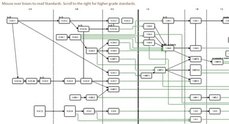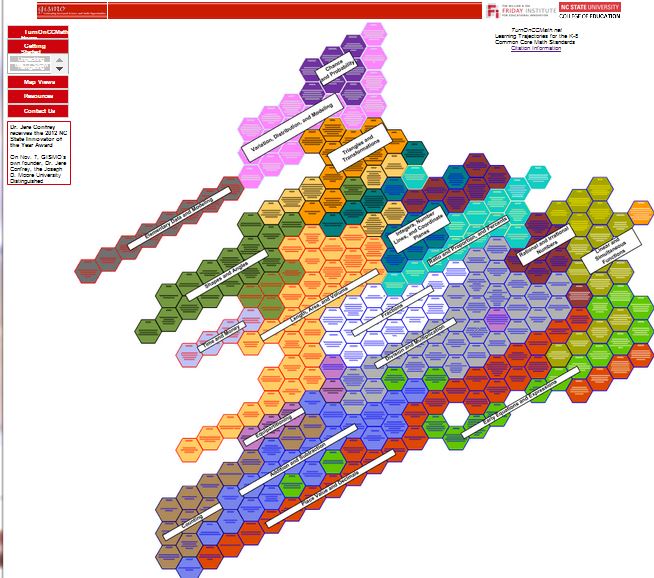Progressions and Learning Trajectories
One of the unique qualities of the Common Core Mathematics Standards is that the authors started with what students need to know to be successful in the 21st century and then built down, grade level by grade level. As explained on the Arizona site,
"The Common Core State Standards in mathematics were built on progressions: narrative documents describing the progression of a topic across a number of grade levels, informed both by research on children's cognitive development and by the logical structure of mathematics. These documents were spliced together and then sliced into grade level standards. From that point on the work focused on refining and revising the grade level standards."

Progression documents are available for each of the learning domains in mathematics:
- K-6 Geometry
- K-5 Measurement & Data (Measurement)
- K-5 Measurement & Data (Data)
- K-5 Number & Operations in Base Ten
- K, Counting & Cardinality and K-5 Operations & Algebraic Thinking
- 3-5 Number & Operations - Fractions
All of the documents as well as those for secondary can be found at Achievethecore.org.
Achievethecore.org has also developed a great online coherence map, showing the connections between standards. This interactive version of Jason Zimba's wiring document provides a great look at how the standards are connected and how they develop student understandings over time.
Turnonccmath.net has a great visual to show the development of understanding in each strand.
William McCallum and Jason Zimba, two of the authors of the Common Cord Mathematics Standards, explain how the progressions were used to write the standards in these videos.



